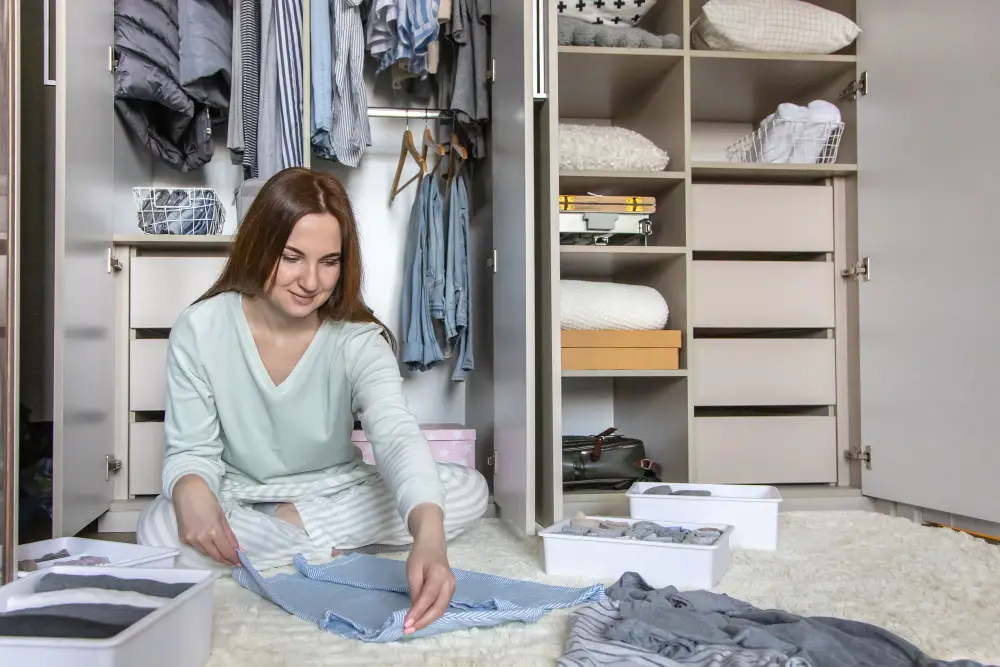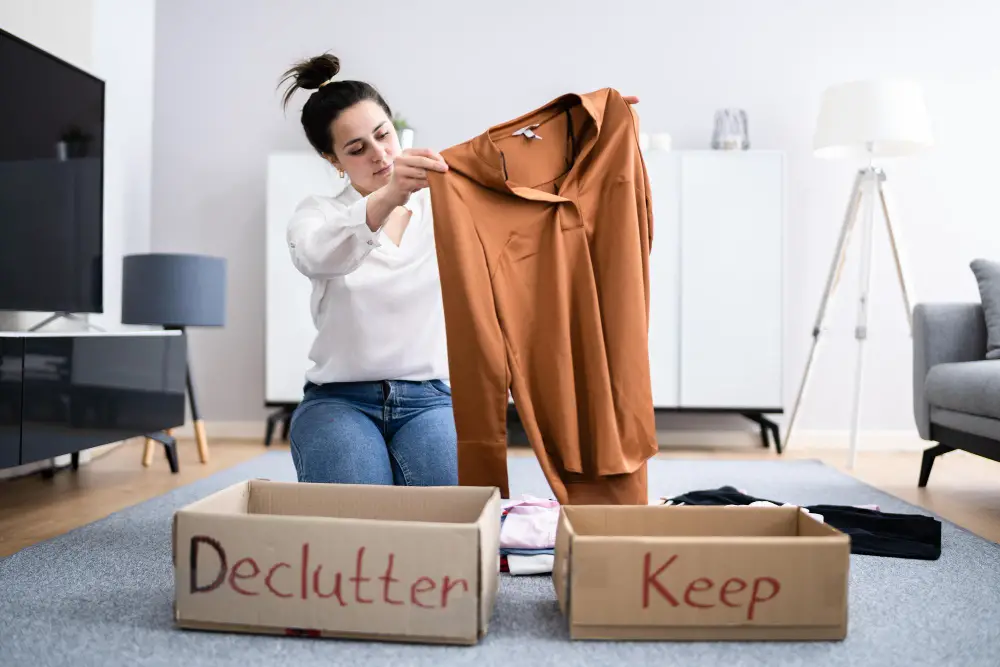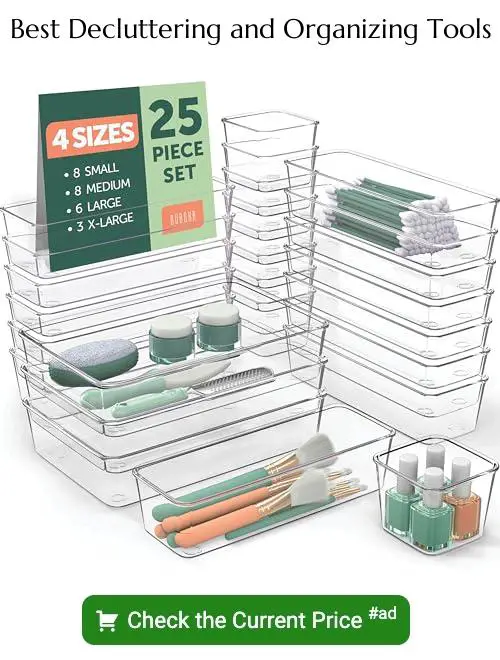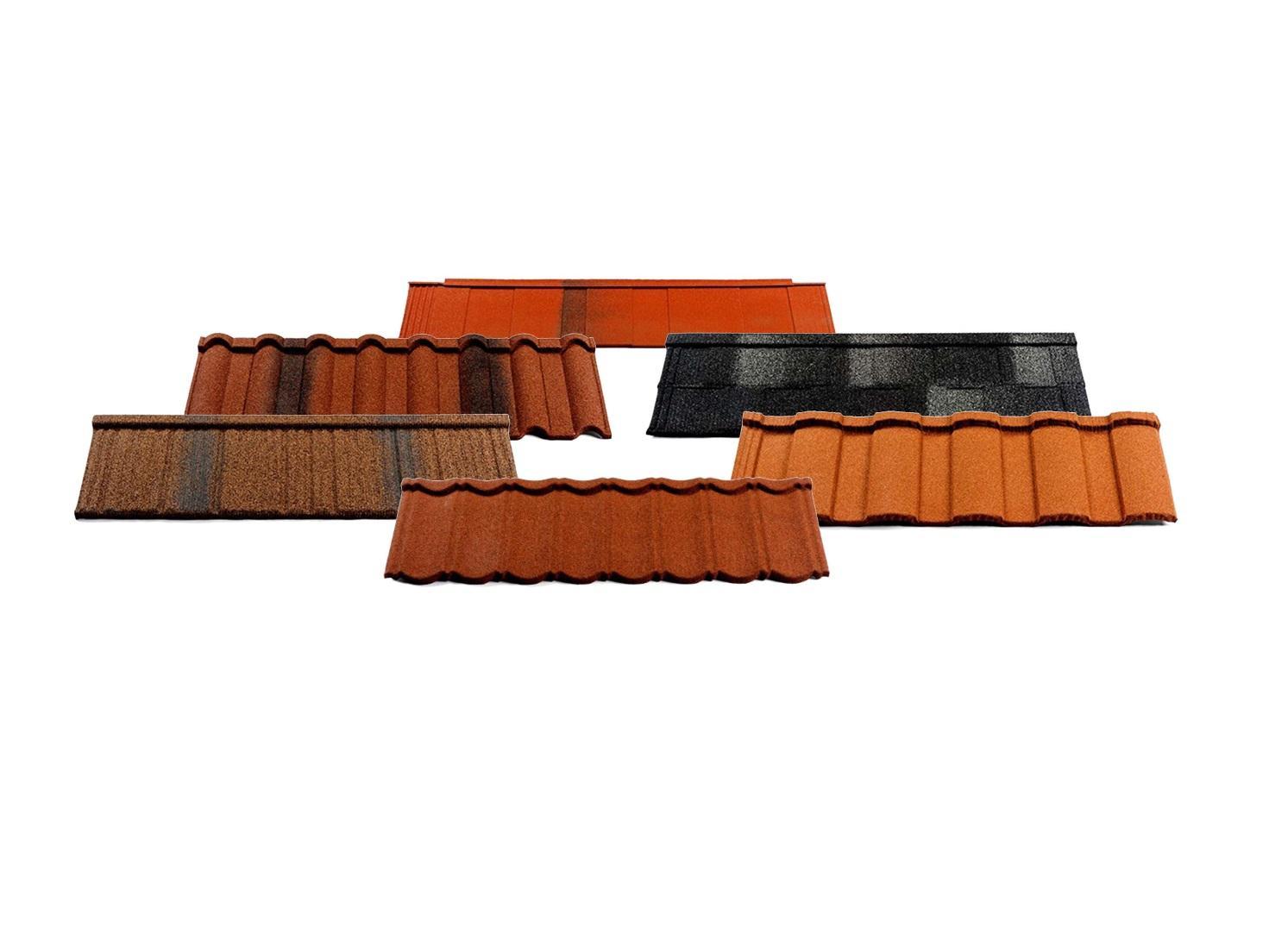Last updated on
Deciding what to keep and what to discard during a decluttering session can be challenging, often marred by sentimental attachments and practical considerations. The process is about making thoughtful decisions that will lead to a more organized and tranquil living space.
Here’s a comprehensive guide on how to approach the decluttering process effectively.
Understand the Purpose of Decluttering

Initiating a successful declutter involves setting clear, personalized objectives. Are you decluttering to simplify your lifestyle, alleviate stress, or prepare for relocation? Perhaps the goal is to create a safer, more functional living environment.
Clearly defining why you are decluttering helps maintain focus and motivation, ensuring each decision aligns with your broader life goals. This step serves as the strategic backbone of the entire decluttering process.
Assess Your Items
The assessment stage is pivotal for a methodical declutter. Start by organizing your possessions into distinct categories—apparel, literature, kitchen gadgets, and decorative items.
This systematic division transforms what might seem like an insurmountable task into manageable segments. Tackling one category at a time can simplify decision-making and help achieve a thorough and effective declutter, ensuring no item is overlooked.
Apply the Right Criteria for Decision-making

When it comes to deciding what to keep and what to throw away, several strategies can aid in making these decisions:
Utility and Frequency of Use
When decluttering, assess how frequently each item is used. Items that haven’t been utilized in over a year might not be essential and could be discarded. Conversely, keep those items that see regular or seasonal use. This approach helps maintain a functional collection of belongings that actively contribute to your everyday life or seasonal needs.
Condition and Value
Examine each item’s condition carefully. Items that are broken, worn out, or damaged should generally be discarded unless they are repairable. On the other hand, items in good condition or those with significant monetary or sentimental value are worth keeping. This balance ensures that you retain items that provide utility or emotional significance.
Available Space
Consider the amount of available space when deciding what to keep. Retaining items that contribute to clutter or do not fit comfortably in your home or office is impractical. Prioritize keeping items that fit within your space and enhance the functionality and aesthetics of your environment. This helps create a more organized and pleasing living or working space.
Adopt Strategies for Elimination
Once you’ve decided which items don’t cut, you need a plan for disposing of them. Selling, donating, or recycling are all viable options. For larger items like furniture, specific disposal methods may be necessary. In this case, a furniture disposal guide can help you obtain detailed information on how to dispose of furniture responsibly.
On the other hand, below are the strategies for eliminating items:
Selling Items
Selling items can be rewarding and financially beneficial. Platforms like eBay, Craigslist, or local Facebook selling groups offer avenues to find buyers who may value what you no longer need.
Donating to Charity
Donating items can provide satisfaction, knowing they are going to a new home where they will be appreciated. Charities often accept various items, from clothes to electronics, and provide tax deductions in return.
Recycling
Recycling is an excellent way to handle items unsuitable for sale or donation. Many municipalities offer recycling programs that can help you dispose of electronics, hazardous materials, and more in an environmentally friendly way.
Organize What Stays
Once the decluttering phase is complete, organizing what remains is vital. Invest in efficient storage solutions that enhance your living space’s utility and aesthetics.
Utilize labeling systems and transparent containers to maintain visibility and accessibility. It’s also beneficial to periodically reassess your storage setups to ensure they continue to meet your needs.
Such practices help maintain organization and provide easy access to your belongings, thus preventing future clutter.
Maintain a Clutter-free Environment
To sustain a clutter-free environment, incorporate routines that discourage the accumulation of unnecessary items. Regularly evaluate your possessions to reaffirm their necessity and usefulness. Make thoughtful and deliberate purchasing decisions to avoid reintroducing clutter. Periodic purging of redundant items is crucial.
By embedding these habits into your daily life, you can maintain an orderly and serene space, ultimately enhancing your overall well-being and quality of life.
The Takeaway
Deciding what to keep and what to toss during decluttering requires careful thought and consideration. By setting clear goals, evaluating each item critically, and effectively disposing of the non-essentials, you can create a more organized space that reflects your needs and values.
Remember, decluttering is not just a one-time event but an ongoing process of adapting your space to enhance your quality of life.





